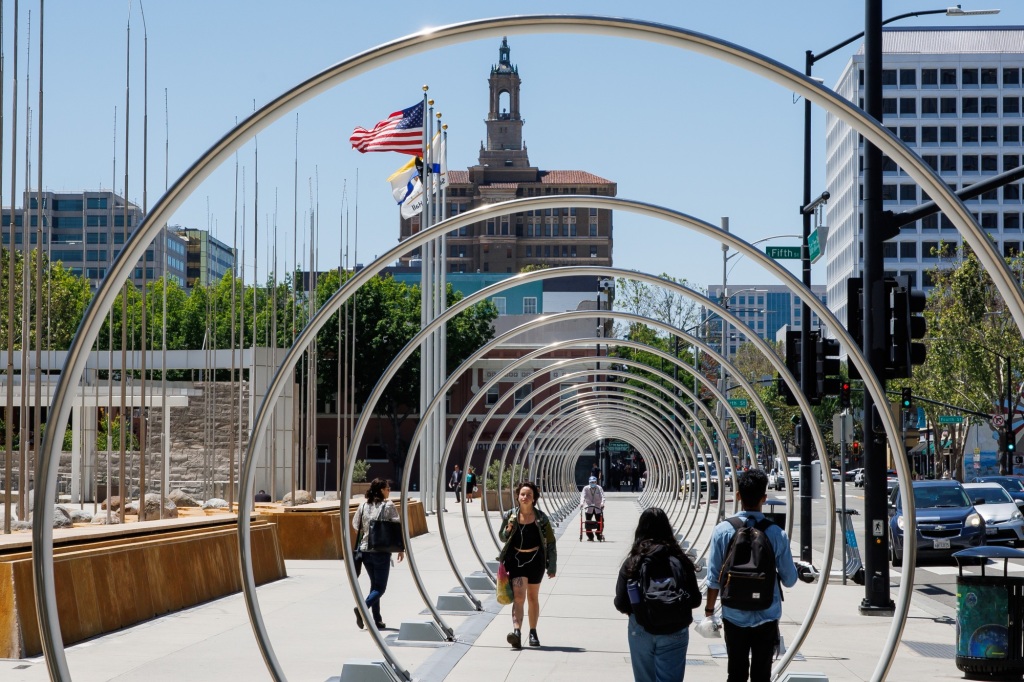
Over the last decade, the Bay Area’s population grew older and more racially diverse — with White residents no longer the region’s largest racial group — while soaring housing costs meant fewer people could afford to own homes.
The demographic and household shifts, highlighted in newly released U.S. census data, could have major implications for the local economy and workforce while underscoring the region’s deepening housing affordability crisis.
The data, comparing census results from 2010 and 2020, comes with a caveat: It doesn’t fully capture the sweeping societal changes brought on by a once-in-a-generation pandemic. That includes a roughly 3% drop in the region’s population since the onset of COVID-19.
Even so, the data sheds new light on how the Bay Area is changing and what challenges it could face in the future. Here are four of the main takeaways:
1. The Bay Area is graying
The region saw a 38% spike in the number of residents 65 or older, with those over the retirement age comprising 15% of the population in 2020, up from 12% in 2010, according to the data.
During that time, the total population of the six-county Bay Area grew by 9% to almost 6.7 million people. The data includes results from Santa Clara, San Mateo, Alameda, Contra Costa, Marin and San Francisco counties.
An aging population is not unique to the Bay Area and has been a long-term trend, said Stephen Levy, director of the Center for Continuing Study of the California Economy in Palo Alto. But as more residents grow older and retire, Levy said, they will continue to put pressure on the health care system and strain the local workforce.
At the same time, the Bay Area saw a nearly 12% decrease in residents under 5 years old, reflecting declining birth rates that have caused drops in school enrollment and forced campus closures across the region.
What can be done to ensure these two trends don’t drag down the Bay Area economy?
“Both of them speak to the need for more housing so we can attract people who can afford to live here,” Levy said.
2. White residents no longer the largest racial group
Asians became the Bay Area’s largest racial group in the last decade, growing from almost 26% of the region’s population in 2010 to just over 33% in 2020, according to the data. That surpassed White residents who comprised 32.9% of the total population, down from 40% in 2010.
Levy said the shift wasn’t surprising given the surge in highly-skilled Chinese and Indian workers immigrating to the region in recent years.
“When you look at who’s in the tech sector here, there’s a huge Asian percentage of the workforce,” Levy said, adding that more international migration will likely be needed as the local workforce ages.
The Bay Area’s Black population, meanwhile, declined from over 6% of the region’s total population to less than 5%. That was likely a consequence of Black residents being displaced from historically African American neighborhoods in cities such as Oakland and East Palo Alto as rents and home prices surged.
The Latino share of the population, which had surged in past decades, stayed roughly the same at 23%.
3. Many residents struggle to afford homeownership
In 2020, nearly 53% of all occupied homes in the Bay Area were owner-occupied, while renters lived in 47%. In 2010, 55% of occupied homes were owner-occupied, while roughly 45% were renter-occupied.
The decline was greater in the Bay Area than in California. According to the California Association of Realtors, just one in five Bay Area residents can comfortably afford the region’s median single-family home price of about $1.1 million. That’s compared to 40% of people nationwide able to afford the U.S. median price of $371,200.
California had the second-lowest homeownership rate behind only New York.
To boost homeownership — a key stepping stone to generational wealth — the state should prioritize policies making it easier to build less expensive townhomes and condominiums following decades of sluggish development, said Michael Lane, a housing policy director with SPUR, a regional public policy think tank.
“That’s really going to be the key in these higher-cost coastal areas,” Lane said.
4. Homes are more crowded
The share of homes with at least two residents ticked up over the last decade, while the share of people living alone declined. That was likely a reflection of more people living with roommates and family to share the burden of high housing costs — a trend that shows signs of reversing as people have sought out more living space in the wake of the pandemic.
